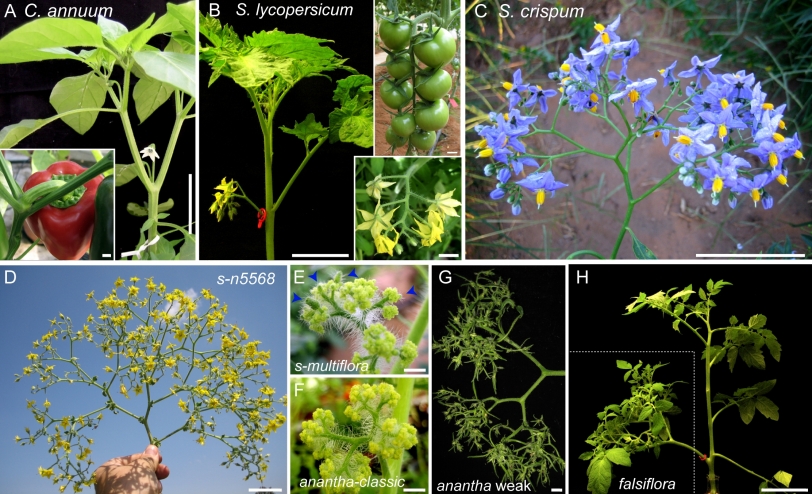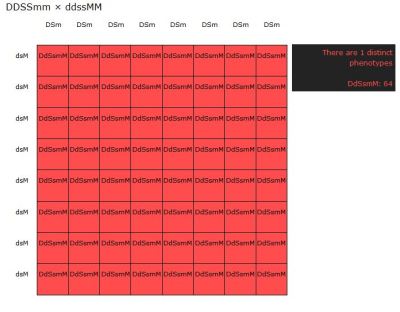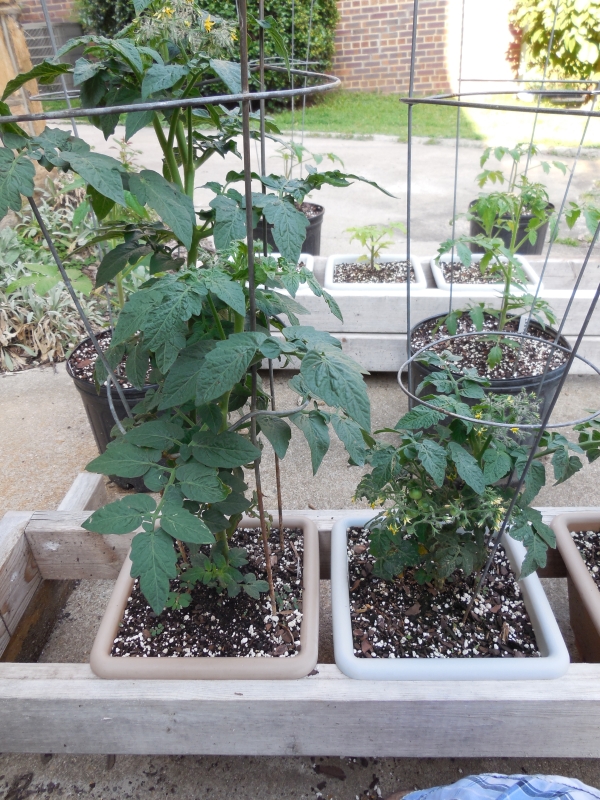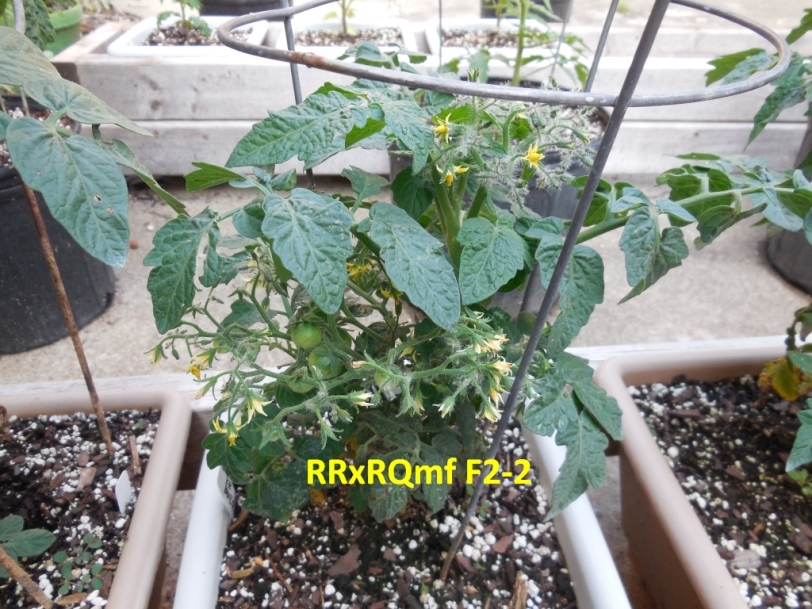Thought I would share a new line I’m working on that appears to have much promise. Anyone who grows tomatoes knows that they put out clusters of flowers with a handful of tomatoes on each inflorescence. There happens to be a tomato mutant called “multiflora”. The picture below is from a scientific publication which describes this mutation in a regulatory gene. You can see in panel D what a multiflora tomato inflorescence looks like. Each inflorescence may have >100 blossoms. Not all will set fruit though.
I decided to try to integrate this trait into my micro-tomato breeding. The multiflora I have is likely a variety called “Rose Quartz multiflora”. Here is what the the flowers and fruit look like
.


The pink fruit is small and quite sweet.
I decided to cross this to Red Robin, a very compact red cherry tomato:
The F1 was a large indeterminate plant as expected. The F2 is where it got interesting as the traits sorted out across individual plants.
Let’s take a look at the genetics. I will assume that there are two genes that control the micro trait (but there may actually be more!) and one gene that controls the multiflora trait. I will also assume that the traits are inherited independently in a simple dominant/recessive manner (remember Mendel’s green and yellow and smooth and shrunken peas from High School biology?!? Just like that!)
The genes for full size and micro I’ll call D and S. I’ll denote a full size plant as DDSS (two copies of dominant for both genes) and a micro tomato as ddss (two copies of recessive for both genes) Likewise the multiflora is a recessive trait and I’ll use M for the regular flower and m for the multiflora flower.
The Rose Quartz plant is homozygous for all three genes. It’s a full size multiflora plant so it will be DDSSmm. Red Robin is a micro tomato and regular flowered thus genetically: ddssMM
When we make the cross all resulting plants get one dominant and one recessive copy of each of the three genes so all plants are DdSsMm, i.e. full size plants and not multiflora. Here is a Punnett square that illustrates all the possible 64 genetic combinations. There is only one phenotype though (full size plant with regular flowers) because every plant has a dominant copy of each gene either from the father or the mother.
I saved a bunch of seed from the F1 plants and now the genetics get a little trickier and the Punnett square more colorful! Every F1 plant is DdSsMm. So, if I self pollinate the F1 plant it’s essentially like crossing DdSsMm by DdSsMm.
Here is the Punnett square that illustrates all the possible genetic combinations in this DdSsMm x DdSsMm trihybrid cross.
Note that even though there are 64 genetic combinations possible there are really only 8 distinct phenotypes. The majority (27/64) of the F2 are D(D/d).S(S/s).M(M/m) or full size plants and not multiflora, the red boxes in the Punnett square. They have at least one copy of a dominant gene for each trait.
Nine of 64 will be full size multiflora plants (D(D/d).S(S/s).mm) and so on. In this cross though I am really interested in a single phenotype, a dwarf micro multiflora (ddssmm) and only one out of 64 plants will have this phenotype (purple box in the Punnett square) Thus if I plant 64 seeds I should in theory find one! In reality, because of random chance, many more than 64 need to be sown to guarantee that at least one plant will have all three traits.
I sowed a flat of seeds (several hundred) and when they were tall enough I selected those that looked dwarf (see previous blog posts). Now I’ve selected all plants that are at least dd i.e. dwarf (it is hard to determine the which plants carry S or s until they get much older). When the dwarfs started to bloom I picked what looked like multiflora plants based on the number of blossoms. Everything else was discarded! I ended up with two plants that were now at least dwarf and also multiflora. A little more growing time and the difference between dwarf and micro became more obvious.
The dwarf got to about 4.5 feet tall after I planted it in the ground. Turned out to be a very pretty and productive plant. Definitely a keeper and will become a normal dwarf line that I pursue.
Here is the fruit from the dwarf which had a nice sweet flavor.
The micro plant above never got over 12″ tall! Bingo! Just what i was looking for!
An update on the F3 winter growout of seeds from the micro plant above coming soon. The results are impressive so stay tuned.







You got some cute little tomatoes, George!
Thanks, Schmoopy! If you’re lucky I might name one after you!
You have made some excellent progress! I know a few people in Australia who were trying to do similar things. I do not know how they went yet. Once you create a micro multiflora tomato you should consider starting another project were you add the parthenocarpic gene.
I’m really really intrigued by your experiments. I’m just a home grower with small yard, and I recently started checking into dwarves because of physical limitations. For micro tomatoes, I’ve been Googling around trying to find tiny tomato plants that actually taste better than Micro Tom. Of course I only have Red Robin besides Micro Tom. Please please update your progress. One breeder is sending me her trial seeds of micros, but I’m excited and anxious to follow your cross.
Hi! Thanks for stopping by! Yes, it is high time for an update. I have several lines I’m working on that I think have promise. The micro-multiflora F3 was grown out over the winter by an online acquaintance. He had impressive results and is growing the F4 this summer.
Thank you for your reply, Chris. I’m whispering—–if you can use a tester under the California sun, I’ll be the first to raise my hand . When/if you decide to share/sell seeds, please please notify me.
Pingback: Dwarf tomato breeding continued! | Chris Kafer
Pingback: Micro-dwarf tomato breeding update | Chris Kafer
Chris, I had no idea you had a blog! This is awesome!! You are the first “scientific” breeder I have been able to fully understand, and the use of the Punnett Square is amazing! If there is ever anything I can do to convince you to share your knowledge over at WTS, I will do my best to make it happen. The world needs to see your work- you have easily bridged the gap between breeder and scientific breeder for me, I greatly appreciate your work. I would love to see an update too.